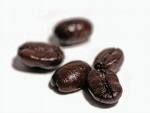
Where do my beans come from?
How/when were they processed?
What SHOULD they taste like?
Questions like these pop up often in conversations over the roaster. When customers drop by to sample a new blend or experiment by making their own blend, time has to be taken to explore the provenance of the beans we use.
For some it is a moral question, for others it is simply one of quantification in the pursuite of the ULTIMATE ESPRESSO.
I scan the web to gather as much information as I can about the characteristics of previous harvests from producers/cooperatives. Then I compare notes with palates from the specialty coffee associations. Lastly I read the cupping notes of everyday Australians who take the time to analyse the flavours in their cup and document the results.
As far as the politics of the cup are concerned: there is much reading to be done, many interviews to conduct. The jury is out....for the moment.
Here follows a map and notes taken from my recent cupping exercises. During these exercises, 8grams of beans are ground medium and placed in a tasting cup for smelling, hot water is then added, the cup is again smelt then allowed to rest. The "crust" is then broken with a tasting spoon, the aroma again noted. A small sample is then slurped using the spoon, it is aerated in the mouth and expelled, initial notes on acidity and flavour are made. This process is repeated and notes are added on Mouthfeel and Finish, a score is tallied and a new batch is prepared for cupping.

I must start with PNG.
The Kimel Peaberry that I have been using comes from the 2007 Harvest. It is described as wet processed All my observations come from beans roasted to full city(Medium,part way into the second crack)It has a very good aroma when freshly ground which deteriorates when hot water is added to the tasting cup. It has a crisp, very bright acid note with a depth of flavour above most in it's price range. It's mouthfeel or body is satisfactory, improving to good with 7-10 days rest post roast. The aftertaste is delightful and long lasting.

Now to Ethiopia, the home of coffee.
The Yirga from this region, straight out of the grinder, promises an exotic cup. Although wet processed, these beans from the 2007 crop have a very strong aroma at Full City. This Bourbon varietal gives off intense stone fruit and berry notes, galangal and a heady mix of clove dry. Once overwhelmed with water, this bean follows through with a high wet aroma score, stone fruits disappear to reveal more cocoa and nut tones. Highly acid but not citrus on the palette means this bean does most of the work in a blend, cutting through the fats in milk and brightening the crema. Once in the mouth, it’s feel is above average, a density that implies dry screening rather than wet processing. The co-operatives from this region are a mish mash of “family gardens” much like PNG so cross contamination although unlikely would not be a surprise. The delightful aftertaste is long lasting and sophisticated, leaving virtually none of the acid and all the bittersweet chocolate.

Monsooned Malabar tasting notes
To India and the home of one of espresso’s true “freaks”; Monsooned Malabar. This beauty is a bit like Roulette. On occasion bagginess and must overwhelm an otherwise terrific cup. These beans from the 2007 crop have escaped the defect notice of the cupper often associated with this method of drying. The long, drawn out process in often humid conditions can have a dramatic impact in the cup. Although a little insipid out of the grinder at just over full city reducing the temps in the roaster do nothing to improve the initial aromas, so these notes are taken at full city with an extended rest(12 days) which for my money enhances initial olfactory responses of this bean. Once the water hits the aromas detected initially of earth and pungent hummus are exaggerated. Good acids follow though pale in comparison to some shown in earlier lighter roasts of the same bean. Good complexity of flavour with wood and bark dominating, giving way to caramel/molasses. High mouthfeel scores come from these “extended rest” beans with their impatiently quaffed sisters just scraping an “below average”. Strong aftertaste, consistent with initial dry observations guarantee this a good cupping score every time. To sum up; a complex and complicated bean, when treated with respect this little beauty can broaden the appeal of a blend without succumbing to the temptation to over roast.
I'd be excited to hear your tasting results from single origin coffees, I'm always keen to learn more. Send me an email if you are prepared to share your experiences!

